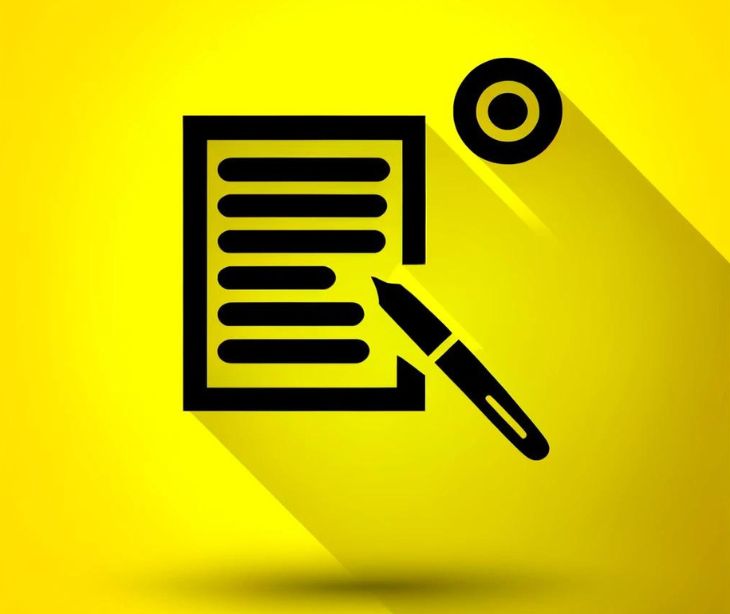
A digital signature is a secure electronic signature that uses encryption to verify the authenticity of a digital document or message. In healthcare, digital signatures ensure that medical documents, like patient records and prescriptions, have not been altered and confirm the identity of the signers.
Table of contents:
- What is a digital signature?
- The types of digital signatures
- Are digital signatures HIPAA compliant?
- Data integrity, non-repudiation, and authenticity
- How to make sure a digital signature is HIPAA compliant
- Common use cases
- Does Paubox Forms use a digital signature?
- How are digital signatures commonly obtained?
- Legislation to know
- The benefits of using digital signatures
- FAQs
What is a digital signature?
According to an IEEE study, "The solution to all these security issues is Digital Signature. When we sign a document digitally, we send the signature as a separate document. For a Digital Signature, the recipient receives the message and the signature. The recipient needs to apply a verification technique to the combination of the message and the signature to verify the authenticity. Digital Signature ensure the privacy of data and prevent it from unauthorized access."
A digital signature is a secure way to verify the authenticity and integrity of digital documents, much like a handwritten signature verifies a paper document. When you sign a document digitally, you create a unique signature using cryptographic techniques and send it along with the message as a separate entity.
The recipient of a digitally signed message receives both the message and the signature. To confirm that the message is genuine and hasn't been tampered with, the recipient uses a verification technique that checks the combination of the message and the signature.
See also: What's the difference between electronic and digital signatures in healthcare?
The types of digital signatures
- Simple digital signatures: Typically used for low-risk purposes, these include basic forms such as scanned images of a signature or a signature created on a touchpad.
- Standard digital signatures: Often referred to as digital signatures, these use a standard public key infrastructure (PKI) to create and verify signatures. They are more secure than simple digital signatures because they provide a means to verify the authenticity of the signer's identity.
- Advanced digital signatures (ADS): These signatures include all the features of standard digital signatures with additional attributes, such as the ability to detect any subsequent changes after signing. They are linked uniquely to the signer and are capable of identifying them, ensuring high security and compliance with strict legal standards.
- Qualified digital signatures (QDS): A subclass of advanced digital signatures created using a secure signature creation device based on a qualified certificate for digital signatures. QDSs are recognized legally across many jurisdictions, offering the highest level of trust and security.
- Cryptographic digital signatures: These involve more complex cryptographic operations and are used primarily in sectors where high security is necessary.
Are digital signatures HIPAA compliant?
To comply with HIPAA, a digital signature must provide these three key aspects:
- Data integrity, which means the data cannot be altered during transmission
- Non-repudiation, ensuring that the signer cannot deny their signature; and
- Authenticity, ensuring that the data can only be accessed by authorized individuals.
HIPAA does not specify or endorse particular brands or types of digital signatures, but it requires that any digital signature technology incorporate strong encryption and secure identity verification methods. For healthcare organizations, choosing a digital signature solution requires verifying that the product complies with HIPAA's security measures.
Select solutions that are widely recognized and specifically designed with compliance standards in mind, such as those certified under the U.S. Federal ESIGN Act or international standards like ISO/IEC 27001.
Data integrity, non-repudiation, and authenticity
Data integrity involves cryptographic processes where a unique hash (a kind of digital fingerprint) of the document's content is created when the document is signed. This hash is then encrypted with the signer's private key. When a recipient wants to verify the integrity of the document, they decrypt the hash using the signer's public key and compare it to a hash they generate from the received document. If the hashes match, it confirms that the document has not been altered since it was signed, thus maintaining data integrity.
Non-repudiation is a feature of digital signatures that prevents the signer from denying their involvement with the document. Because the digital signature is created using the signer's private key, which is assumed to be controlled only by the signer, it firmly links the signature to the signer's identity. This feature provides strong legal grounds for non-repudiation, as it can be authoritatively proven that the signer signed the document.
Authenticity is created through the use of digital certificates, which are issued by trusted Certificate Authorities (CAs). These certificates serve as proof that the public key used in the digital signature process belongs to the individual it claims to represent. This system of certificates and keys managed by CAs helps to verify the identity of the parties in the transaction, ensuring that the individuals are who they claim to be.
These features — data integrity, non-repudiation, and authenticity — provide a high level of security and trust in digital signatures.
How to make sure a digital signature is HIPAA compliant
- Advanced encryption: Use advanced encryption standards, such as AES (Advanced Encryption Standard) with a 256-bit key, for all digital signature processes. This secures the data during transmission and while at rest.
- Authentication mechanisms: Use two-factor authentication, digital certificates, or biometric verification to confirm the signer's identity.
- Tamper-evident technology: Employ digital signature solutions that include tamper-evident technology, which alerts users if a signed document has been altered after the signature was applied.
- Data integrity checks: Implement mechanisms to regularly check the integrity of stored data.
- Data resilience: Make sure that backup and recovery procedures are in place for electronic documents and signatures. This protects against data loss and provides for the continuity of care in the event of an incident.
Common use cases
- Digital signatures are used to authenticate electronic health records.
- They facilitate the secure exchange of patient data between healthcare providers and insurance companies.
- Healthcare professionals use digital signatures to authorize electronic prescriptions.
- They enable the secure signing of consent forms and other patient documents online, reducing paperwork and administrative burden.
- Digital signatures help in maintaining compliance with health data privacy regulations like HIPAA by securing sensitive patient information.
- They are used in telemedicine to authenticate the identity of healthcare providers and patients during remote consultations.
Does Paubox Forms use a digital signature?
Paubox Forms offers a signature feature that allows form fillers to provide signatures, which can be done by drawing or typing the signature. This functionality aligns with what is typically known as e-signatures, rather than digital signatures. E-signatures are generally used to capture a person's intent to agree or approve the contents of a document in a simple and non-encrypted form.
This is distinct from digital signatures, which involve more complex encryption technologies to secure the integrity of the signed data. The option in Paubox Forms to either draw or type a signature indicates that it uses e-signatures, focusing on ease of use and accessibility rather than the cryptographic security measures associated with digital signatures.
How are digital signatures commonly obtained?
- Email: Digital signatures are often sent as attachments in a HIPAA compliant email or embedded within the email itself. Secure email services with encryption can protect the signature and document integrity during transit.
- Document management systems: Many organizations use document management or collaboration platforms like Adobe Document Cloud, Microsoft SharePoint, or Google Drive. These systems often have built-in support for creating, sending, and managing digitally signed documents.
- Dedicated digital signature services: DocuSign, Adobe Sign, and PandaDoc specialize in digital signatures. They provide tools for signing documents electronically and managing the signed documents securely.
- File transfer protocol (FTP) and secure FTP (SFTP): While less common for individual document signing, FTP and SFTP are used by some organizations for bulk or automated transfer of digitally signed documents, especially when integrated into larger automated systems.
Legislation to know
The terms "electronic signature" and "digital signature" are often used interchangeably, but they refer to different types of electronic signatures with distinct characteristics and purposes.
The Electronic Signatures in Global and National Commerce Act (ESIGN) is a federal law that applies to both electronic signatures and digital signatures in the U.S. ESIGN establishes the legality and enforceability of electronic records and electronic signatures in interstate and foreign commerce, ensuring their legal effect, validity, and enforceability. The law provides that a contract or signature "...may not be denied legal effect, validity, or enforceability solely because it is in electronic form…" and that a contract relating to such a transaction may not be denied legal effect, validity, or enforceability solely because an electronic signature or electronic record was used in its formation.
Uniform Electronic Transactions Act (UETA) provides a framework for electronic transactions, including the use of digital signatures, by establishing standards for the creation, transfer, and retention of electronic records. UETA has been enacted by 48 states, Puerto Rico, the U.S. Virgin Islands, and the District of Columbia, creating a consistent legal environment for electronic signatures across most of the country.
While HIPAA does not explicitly mention electronic signatures, it allows for the use of e-signatures as long as they comply with federal e-signature laws and result in a legally binding contract under applicable state law.
The legal criteria for digital signatures
- Intent to sign: Digital signatures, like traditional signatures, must be executed with the clear intent to sign the document. The processes used must include a way for the signatory to express their intent (e.g., clicking a button that says "Sign Here").
- Consent to do business electronically: All parties involved must consent to conduct their business electronically. Consent must be clear and can be obtained through explicit agreement or inferred by the ongoing conduct of the parties involved.
- Association of signature with the record: The digital signature must be attached to or logically associated with the electronic record being signed.
- Record retention: The electronic signature system used must be capable of retaining and accurately reproducing the signed record for later reference by all parties. The record must be accessible and remain unchanged from when it was signed, except for annotations, changes, or additions noted by timestamp or audit trail.
The benefits of using digital signatures
- Non-repudiation: Digital signatures are uniquely linked to their signer, which provides a robust mechanism for non-repudiation. Once a document is signed digitally, the signer cannot deny their signature or claim that they did not sign the document.
- Authentication mechanisms: Digital signatures use public key infrastructure (PKI), which involves two cryptographic keys (a public key and a private key). The private key, which is kept secure by the signer, is used to create the signature, and the public key is used to verify it.
- Integrity verification: Once a document is digitally signed, any alteration to the document invalidates the signature. For healthcare records, any unauthorized changes to medical records or treatment plans can be immediately detected.
- Cryptographic timestamping: Digital signatures can include timestamps that provide a cryptographic seal, noting the exact time a document was signed. This helps maintain accurate and tamper proof records in time- ensitive medical environments.
FAQs
Are digital signatures legally binding?
Yes, in many jurisdictions, digital signatures are legally binding and are treated with the same level of validity as traditional handwritten signatures, provided they meet specific standards.
Can digital signatures be forged?
Digital signatures are difficult to forge because they are based on complex encryption techniques. Any attempt to alter the signed document or the signature itself is easily detectable.
What are the components of a HIPAA compliant digital signature?
The components include encryption to provide data integrity and confidentiality, identity verification mechanisms to authenticate the signer, and a secure audit trail to track access and modifications.
Subscribe to Paubox Weekly
Every Friday we'll bring you the most important news from Paubox. Our aim is to make you smarter, faster.




